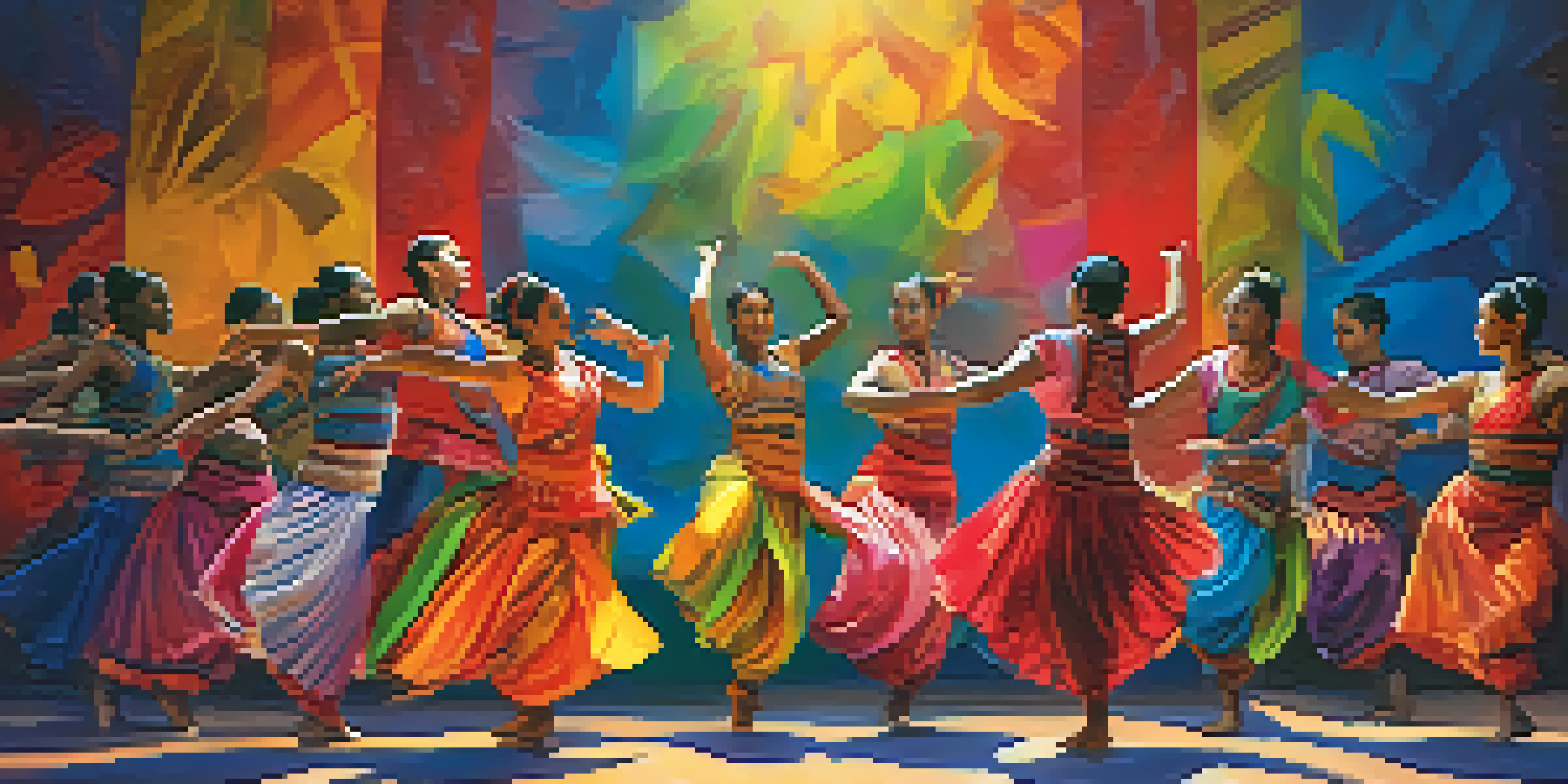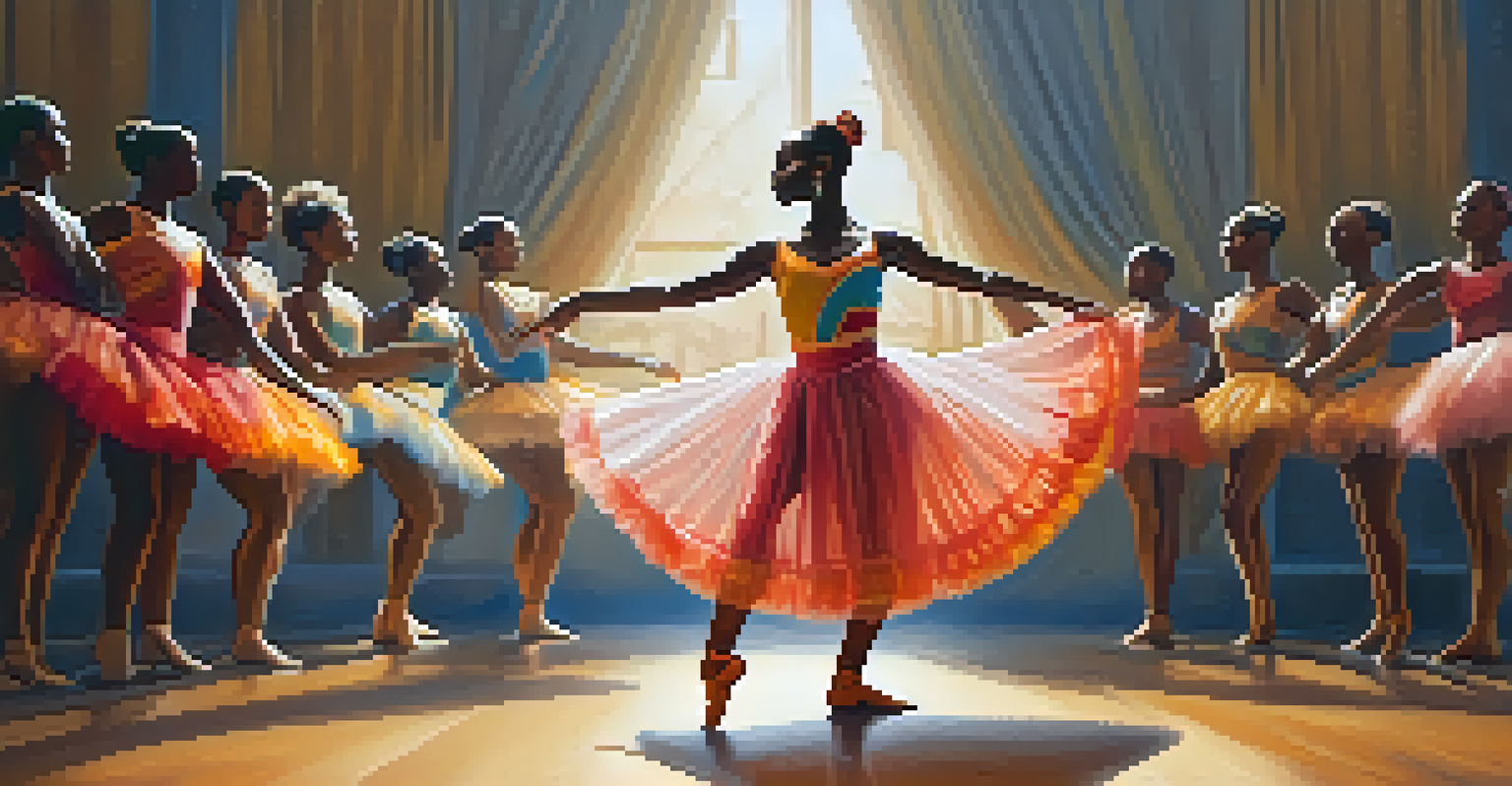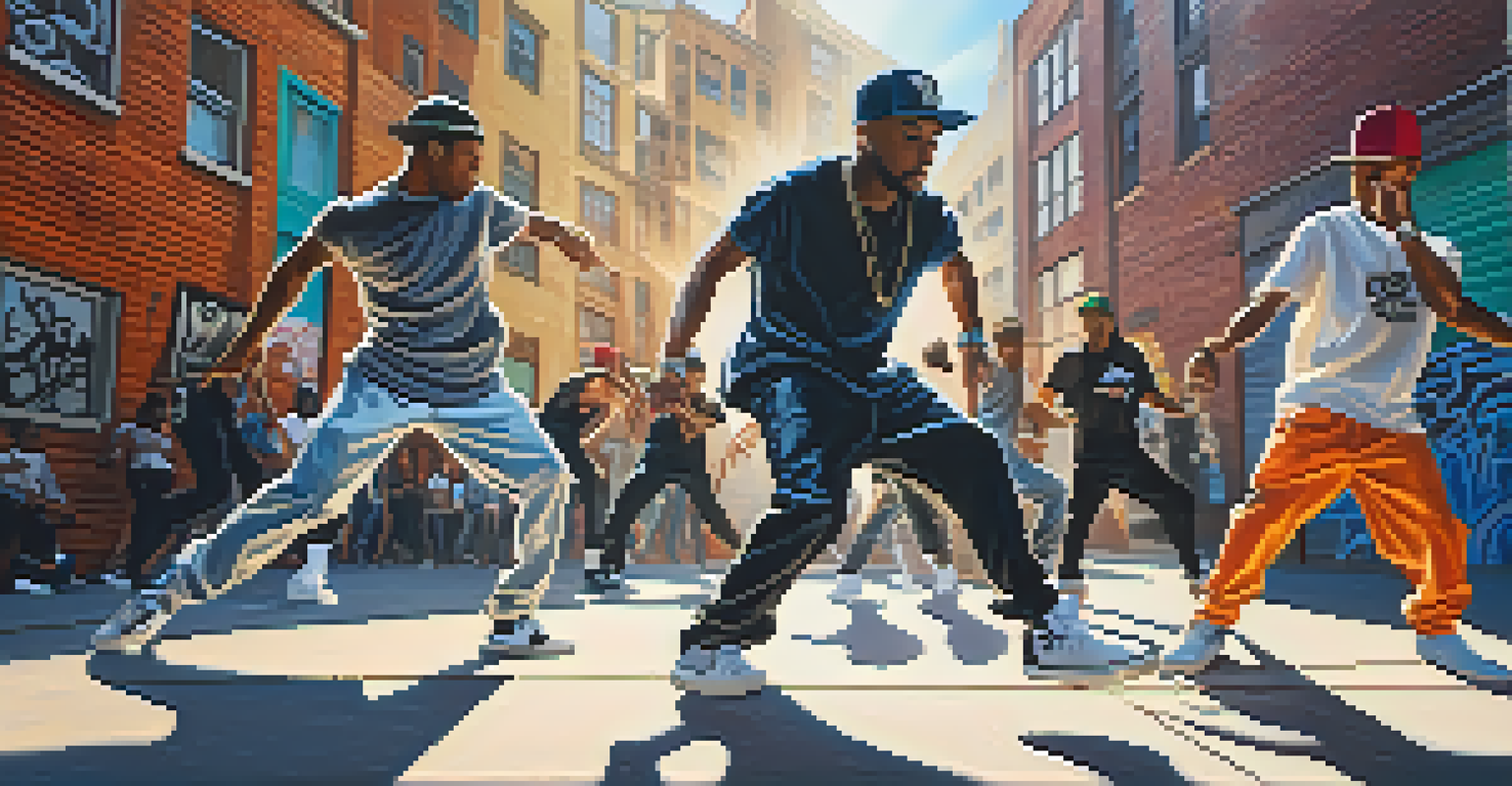Cultural Appropriation in Dance: Case Studies and Examples

Defining Cultural Appropriation in the Dance Context
Cultural appropriation refers to the adoption of elements from one culture by another, often without understanding or respect. In the dance world, this can manifest when dancers adopt styles or movements from cultures that are not their own. It's essential to differentiate between appreciation, which fosters respect and understanding, and appropriation, which can exploit and misrepresent cultural significance.
Culture is not a costume.
For instance, when a contemporary dancer incorporates traditional Native American dance without understanding its context, it can be seen as appropriation. This not only disrespects the cultural origins but also diminishes the profound meanings associated with those movements. Acknowledging these differences helps to foster a more respectful dialogue about cultural exchange in dance.
With dance being a universal language, navigating cultural boundaries can be tricky. The challenge lies in celebrating diversity while honoring the roots of the dance forms. By understanding the nuances of cultural appropriation, dancers can engage in more meaningful and respectful interactions with various styles.
Case Study: Hip-Hop and Its Cultural Roots
Hip-hop dance has its origins in African American culture, emerging from the streets of the Bronx in the 1970s. As it gained popularity, many dancers from different backgrounds began to incorporate hip-hop elements into their performances. While this could be seen as a celebration of the art form, it sometimes crosses into appropriation when dancers fail to acknowledge the genre's historical and cultural significance.

For example, when high-profile dance companies showcase hip-hop choreography without crediting its roots, they risk alienating the very communities that birthed the style. This lack of acknowledgment can lead to feelings of exploitation among original creators, emphasizing the importance of respecting and understanding hip-hop's foundations.
Understanding Cultural Appropriation
Cultural appropriation in dance occurs when elements from one culture are adopted without understanding or respect, highlighting the need for awareness and sensitivity.
The hip-hop scene offers a complex lens through which to view cultural appropriation. Dancers and choreographers can navigate these waters by actively supporting and collaborating with artists from the hip-hop community, ensuring that the culture is celebrated authentically and respectfully.
Ballet and the Influence of Non-Western Cultures
Ballet, rooted in European tradition, has seen influences from various cultures over time. When ballet companies incorporate elements from non-Western cultures into their performances, they must tread carefully. While blending styles can create beautiful art, it can also lead to appropriation if the cultural elements are presented without context or respect.
In a world where you can be anything, be kind.
Consider a ballet performance that features African dance movements or costumes. If the choreography fails to honor the cultural significance of these elements, it risks trivializing them. It's crucial for dancers and choreographers to engage with cultural consultants or artists to ensure that their interpretations are respectful and informed.
By fostering collaboration with artists from the cultures being represented, ballet can evolve while honoring its roots. This approach not only enriches the performance but also opens a dialogue about cultural exchange, creating a more inclusive dance environment.
Contemporary Dance: A Mixed Bag of Influences
Contemporary dance thrives on blending different styles, making it a melting pot of influences. However, this diversity can sometimes lead to cultural appropriation, especially when artists borrow from marginalized communities. To create a more equitable dance landscape, it's essential for contemporary dancers to reflect on the origins of the movements they incorporate.
For instance, a contemporary piece that features traditional Indian dance might come across as culturally rich, yet it could also risk appropriation if not executed thoughtfully. Dancers should strive to educate themselves about the cultural contexts and meanings behind the movements they use, promoting a sense of respect and understanding.
The Importance of Collaboration
Choreographers are encouraged to collaborate with artists from the cultures they draw inspiration from, ensuring authentic representation and cultural storytelling.
Engaging with the communities from which these dances originate can help bridge the gap between appreciation and appropriation. By fostering partnerships with artists and cultural leaders, contemporary dance can celebrate diversity while honoring its roots.
The Role of Social Media in Cultural Appropriation Awareness
Social media has become a powerful platform for raising awareness about cultural appropriation in dance. Dancers and audiences alike can share their perspectives, highlighting instances where appropriation occurs. This increased visibility can prompt discussions about respect and appreciation in the dance community, encouraging artists to think critically about their work.
For example, viral posts calling out dance trends that appropriate elements from Indigenous cultures can spark conversations about the importance of honoring the origins of these movements. This dialogue can push artists to be more mindful of their choices and the implications behind them.
Moreover, social media allows marginalized voices to be heard, providing platforms for artists from various cultures to share their stories. By amplifying these voices, the dance community can foster a more inclusive environment where cultural exchange is celebrated, and appropriation is challenged.
Choreographers Taking a Stand Against Appropriation
Many choreographers are actively working to address cultural appropriation in their work. By advocating for authentic representation and collaboration, they aim to create dance that honors its origins rather than exploits them. This shift is essential for fostering a respectful dialogue about cultural exchange in the dance world.
For instance, choreographers who collaborate with artists from the cultures they are inspired by help to create pieces that reflect a genuine appreciation for those traditions. This approach not only enriches their work but also creates a platform for cultural storytelling that is respectful and informed.
Educating for Responsible Practices
Promoting workshops on cultural sensitivity can help dancers recognize the fine line between appreciation and appropriation, fostering a more respectful dance environment.
These efforts send a powerful message to the dance community about the importance of cultural sensitivity. By challenging the status quo, these choreographers pave the way for future generations to engage in dance with respect and understanding.
Encouraging Responsible Dance Practices
To combat cultural appropriation in dance, it's crucial to encourage responsible practices among dancers and choreographers. This means fostering an environment where artists feel empowered to research and understand the cultural contexts behind the movements they wish to incorporate. Education is key to fostering respect and appreciation in dance.
One way to promote responsible practices is by offering workshops and training sessions on cultural sensitivity. These educational opportunities can help dancers recognize the line between appreciation and appropriation, allowing them to make informed choices in their work.

Building a community that values authenticity and respect can help create a more inclusive dance landscape. By prioritizing education and open dialogue, the dance world can move towards a future where cultural exchange is celebrated without crossing into appropriation.